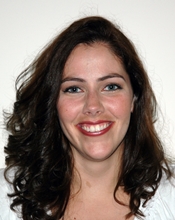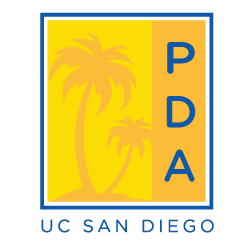
Laura E. Crotty Alexander, M.D.

- Interview Overview
Interview Overview
Interviews by: Ann Lin
Editing: Alexandra Bortnick
1. Where did you attend your undergrad and graduate studies?
I did my undergraduate and medical school studies at Duke University. I completed my Internal Medicine residency and Pulmonary Critical Care Fellowship at Harvard. I then completed a postdoctoral fellowship in Infectious Disease and Innate Immunity at UCSD.
2. Could you describe your current job profile?
I am an Assistant Professor here at UC San Diego. I am primarily based at the VA San Diego hospital on the southeast corner of the UCSD campus. I am a clinician scientist, committing 80% of my time to basic science research endeavors. The remainder of my appointment is devoted to teaching and clinical care.
3. How many years have you been at UCSD?
I have been at UC San Diego for 6 years now.
4. What made you decide to become a professor?
I fell in love with research during my undergraduate years, and decided to become a physician after graduating. The pathway for clinician scientists typically leads to professor positions, as almost all of us are at academic institutions.
5. Apart from the research you conducted, do you feel like anything in particular has helped you to acquire your current position?
The career guidance I received from my postdoctoral mentor Dr. Victor Nizet was instrumental in directing me to this position. The research mentorship Victor provided was essential in leading to my research publications and grant funding, without which I would not have been hired as a faculty member.
6. Could you list some of the most striking similarities and differences between your postdoc and current position?
The biggest difference is my paycheck. It was a satisfying step to have a reasonable salary after eleven years as a trainee. I do more teaching in my current position, which is very rewarding. Also, as a professor, I have many more meetings which take up a fair amount of time – committees at UCSD and for my subspecialty society, fellowship committees, and a variety of commitments that are a necessary part of being a professor in an academic institute.
7. What do you do when you’re teaching or in the lab?
I primarily teach medical students in small group sessions as well as giving lectures. I have several undergraduate students whom I teach 1 on 1 in my laboratory. I perform experiments in the lab as well as meet with all lab members to plan their experiments and analyze their results.
8. What has been the biggest challenge you’ve face in your career and how did you overcome such challenge?
My biggest challenge was moving cross-country, away from the place where I had trained, to a brand new University where I had no place inside the Division in which I was clinically trained. I overcame this by cultivating a network of mentors and advisors from across the country, including people at UCSD. This network has led to job opportunities, publications, and placement on international society committees. So I advise early career researchers to reach out to people whose research you admire, or whose career track you are interested in mirroring. You will be surprised by how many people are willing to share their experiences with you, and are willing to become your advisor or mentor.
9. Do you have any advice for postdocs who want to pursue research in academics or outside of academics?
Make sure you love research. It is a wonderful career for those who truly love it. There are opportunities both in academic centers and in industry. It is good to be flexible in terms of geography, and to be open to job descriptions that you might not immediately think match your skills and interests.
